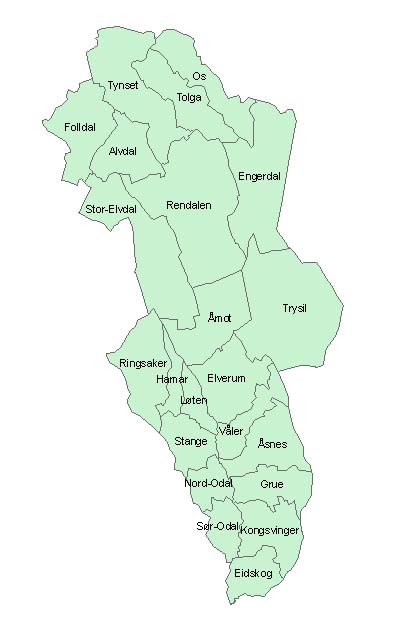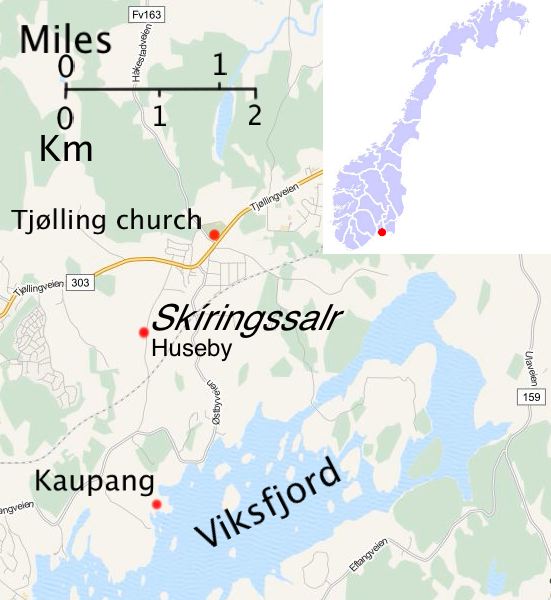|
Halfdan Hvitbeinn
Halfdan Whiteshanks (Old Norse: ''Hálfdan hvítbeinn'') was a semi-historical petty king in Norway, described in the ''Ynglinga saga''. The following description is based on the account in Ynglinga saga, written in the 1220s by Snorri Sturluson. He was the son of Olof Trätälja of the House of Yngling. His father was sacrificed to Odin by the Sweden, Swedish settlers in Värmland because of a famine. Some Swedes, however, realised that the famine was brought by overpopulation and not by the fact that the king had been neglecting his religious duties. Consequently, they resolved to cross the Ed Forest and settle in Norway and happened to end up in Soleyar, where they killed king Sölve and took Halfdan prisoner. The Swedish expatriates elected Halfdan king as he was the son of their old king, Olof. Halfdan subjugated all of Soleyar and took his army into Romerike and subjugated that province as well. Halfdan was to become a great king, who married Åsa, the daughter of king Eyste ... [...More Info...] [...Related Items...] OR: [Wikipedia] [Google] [Baidu] |
Old Norse
Old Norse, Old Nordic, or Old Scandinavian, is a stage of development of North Germanic languages, North Germanic dialects before their final divergence into separate Nordic languages. Old Norse was spoken by inhabitants of Scandinavia and their Viking expansion, overseas settlements and chronologically coincides with the Viking Age, the Christianization of Scandinavia and the consolidation of Scandinavian kingdoms from about the 7th to the 15th centuries. The Proto-Norse language developed into Old Norse by the 8th century, and Old Norse began to develop into the modern North Germanic languages in the mid-to-late 14th century, ending the language phase known as Old Norse. These dates, however, are not absolute, since written Old Norse is found well into the 15th century. Old Norse was divided into three dialects: Old West Norse, ''Old West Norse'' or ''Old West Nordic'' (often referred to as ''Old Norse''), Old East Norse, ''Old East Norse'' or ''Old East Nordic'', and ''Ol ... [...More Info...] [...Related Items...] OR: [Wikipedia] [Google] [Baidu] |
Hedmark
Hedmark () was a county in Norway before 1 January 2020, bordering Trøndelag to the north, Oppland to the west, Akershus to the south, and Sweden to the east. The county administration is in Hamar. Hedmark and Oppland counties were merged into Innlandet county on 1 January 2020, when Norway's former 19 counties became 10 bigger counties / regions Hedmark made up the northeastern part of Østlandet, the southeastern part of the country. It had a long border with Sweden to the east ( Dalarna County and Värmland County). The largest lakes were Femunden and Mjøsa, the largest lake in Norway. Parts of Glomma, Norway's longest river, flowed through Hedmark. Geographically, Hedmark was traditionally divided into: Hedemarken (east of the lake Mjøsa), Østerdalen ("East Valley" north of the town Elverum), and Solør / Glåmdalen (south of Elverum) and Odal in the very south. Hedmark and Oppland were the only Norwegian counties with no coastline. Hedmark also hoste ... [...More Info...] [...Related Items...] OR: [Wikipedia] [Google] [Baidu] |
Semi-legendary Kings Of Sweden
The legendary kings of Sweden () according to legends were rulers of Sweden and the Swedes who preceded Eric the Victorious and Olof Skötkonung, the earliest reliably attested Swedish kings. Though the stories of some of the kings may be embellished tales of local rulers or chiefs that actually existed. For example, Hygelac (500 A.D.) is believed to have historical basis due to his name being attested in Frankish, English, Danish and Icelandic sources. But the historicity of most legendary kings remains impossible to verify due to a lack of sources.Dick, Harrison 2011 http://blog.svd.se/historia/2011/10/13/varfor-jag-inte-tror-pa-sagokungar/ The modern Swedish monarchy considers Eric the Victorious to have been the first King of Sweden. In medieval Swedish lists of kings, the figure generally represented as the first king of Sweden is Olof Skötkonung, the first Christian king of Sweden and the first Swedish king to mint coins. The earlier kings are for the most part only att ... [...More Info...] [...Related Items...] OR: [Wikipedia] [Google] [Baidu] |
Norwegian Petty Kings
Norwegian, Norwayan, or Norsk may refer to: *Something of, from, or related to Norway, a country in northwestern Europe *Norwegians, both a nation and an ethnic group native to Norway * Demographics of Norway *The Norwegian language, including the two official written forms: **Bokmål, literally "book language", used by 85–90% of the population of Norway **Nynorsk, literally "New Norwegian", used by 10–15% of the population of Norway *The Norwegian Sea Norwegian or may also refer to: Norwegian *Norwegian Air Shuttle, an airline, trading as Norwegian **Norwegian Long Haul, a defunct subsidiary of Norwegian Air Shuttle, flying long-haul flights *Norwegian Air Lines, a former airline, merged with Scandinavian Airlines in 1951 *Norwegian coupling, used for narrow-gauge railways *Norwegian Cruise Line, a cruise line *Norwegian Elkhound, a canine breed. *Norwegian Forest cat, a domestic feline breed *Norwegian Red, a breed of dairy cattle *Norwegian Township, Schuylkill County, ... [...More Info...] [...Related Items...] OR: [Wikipedia] [Google] [Baidu] |
Skiringssal
Skiringssal (Old Norse ''Skíringssalr'') was the name of a Viking Age hall which stood at a site now known as Huseby, about 0.73 miles (1.2 km) south-west of Tjølling, a settlement a little over east of Larvik, in the south of the Norwegian county of Vestfold. By extension the name also referred to the local ''bygd'', or settlement area, and in the 15th century it was probably used synonymously for the ecclesiastical parish of Tjølling. Skiringssal is mentioned in several early medieval sources, including the ''Ynglinga saga'', the ''Fagrskinna'' and the ''Sögubrot af nokkrum fornkonungum''. The name last occurs in 1445, in the form "Skirisall", in a hospital register from Tønsberg. This and other documents from earlier in the 15th century associate Skiringssal with locations in the parish of Tjølling. Archaeological excavations at Huseby have shown that a large hall was built there in the mid-8th century and went out of use by about 900. Excavations at Kaupa ... [...More Info...] [...Related Items...] OR: [Wikipedia] [Google] [Baidu] |
Ingjald Olofsson
Ingjald Olofsson was the son of Olof Trätälja and became the king of Värmland after his father's death, according to legend. When Ingjald died, his brother Halfdan Hvitbeinn made Värmland part of his kingdom Kingdom commonly refers to: * A monarchy ruled by a king or queen * Kingdom (biology), a category in biological taxonomy Kingdom may also refer to: Arts and media Television * ''Kingdom'' (British TV series), a 2007 British television drama s .... Värmland Norwegian petty kings Ingjald Olofsson Year of birth missing Year of death missing {{Sweden-royal-stub ... [...More Info...] [...Related Items...] OR: [Wikipedia] [Google] [Baidu] |
Vestfold
Vestfold is a traditional region, a former county and a current electoral district in Eastern Norway. In 2020 the county became part of the much larger county of Vestfold og Telemark. Located on the western shore of the Oslofjord, it bordered the previous Buskerud and Telemark counties. The county administration was located in Tønsberg, Norway's oldest city, and the largest city is Sandefjord. With the exception of the city-county of Oslo, Vestfold was the smallest county in Norway by area. Vestfold was the only county in which all municipalities had declared Bokmål to be their sole official written form of the Norwegian language. Vestfold is located west of the Oslofjord, as the name indicates. It includes many smaller, but well-known towns in Norway, such as Larvik, Sandefjord, Tønsberg and Horten; these towns run from Oslo in an almost constant belt of urban areas along the coast, ending in Grenland in neighbouring region Telemark. The river Numedalslågen runs ... [...More Info...] [...Related Items...] OR: [Wikipedia] [Google] [Baidu] |
Hadeland
Hadeland () is a traditional district in the southeastern part of Norway. It is centered on the southern part of the large lake Randsfjorden in Innlandet and Viken counties. The district consists of the municipalities Gran in Innlandet county and Jevnaker and Lunner in Viken county. Hadeland occupies the area north of the hills of Nordmarka close to the Norwegian capital Oslo. The soil around the Randsfjorden is amongst the most fertile in Norway. Hadeland accounts for just 5% of the country's area, but it represents 13% of its agricultural land. Farmers harvest grains and potatoes. Pigs, dairy cattle, and horses are also bred at farms there. Jevnaker is located to the southern and western side of the Randsfjorden. Gran's rolling countryside is home to about two-thirds of the nearly 30,000 people living in Hadeland. The village of Jaren serves as the area's main center of commerce. The municipality of Gran is divided by the Randsfjorden, and its western part is known as th ... [...More Info...] [...Related Items...] OR: [Wikipedia] [Google] [Baidu] |
Toten
Toten is a traditional district in Innlandet county in the eastern part of Norway. It consists of the municipalities Østre Toten and Vestre Toten. The combined population of Toten is approximately 27,000. The largest town is Raufoss with approximately 6,000 inhabitants. In the mostly rural municipality of Østre Toten, Lena is the biggest settlement with approximately 1100 inhabitants. Agriculture is an integral aspect of the economy of Toten. The agricultural focus lies mostly in Østre Toten, whereas Vestre Toten is a center for industry. In Toten, large forest areas can be found. These are important recreational areas, and serve as popular hunting and fishing grounds. The forests are hosts to elk and deer as well as small game such as rabbits and fowl. There are plenty of smaller lakes in which fish such as char Char may refer to: People *Char Fontane, American actress *Char Margolis, American spiritualist * René Char (1907–1988), French poet *The Char family o ... [...More Info...] [...Related Items...] OR: [Wikipedia] [Google] [Baidu] |
Hedemark
Hedmark () was a county in Norway before 1 January 2020, bordering Trøndelag to the north, Oppland to the west, Akershus to the south, and Sweden to the east. The county administration is in Hamar. Hedmark and Oppland counties were merged into Innlandet county on 1 January 2020, when Norway's former 19 counties became 10 bigger counties / regions Hedmark made up the northeastern part of Østlandet, the southeastern part of the country. It had a long border with Sweden to the east ( Dalarna County and Värmland County). The largest lakes were Femunden and Mjøsa, the largest lake in Norway. Parts of Glomma, Norway's longest river, flowed through Hedmark. Geographically, Hedmark was traditionally divided into: Hedemarken (east of the lake Mjøsa), Østerdalen ("East Valley" north of the town Elverum), and Solør / Glåmdalen (south of Elverum) and Odal in the very south. Hedmark and Oppland were the only Norwegian counties with no coastline. Hedmark also hoste ... [...More Info...] [...Related Items...] OR: [Wikipedia] [Google] [Baidu] |
Eystein Halfdansson
King Eystein is knocked off his ship. (''Illustration by Gerhard Munthe'') Eystein Halfdansson (Old Norse: ''Eysteinn Hálfdansson'') was the son of Halfdan Hvitbeinn of the House of Yngling according to Norse tradition. He inherited the throne of Romerike. Ari Thorgilsson in his Íslendingabók calls him Eystein the Swift (Old Norse: ''Eystein fret/fjert'') without comment, in his king list, just naming his father and his son. Snorri does not call him by this nickname, but does give us a colorful story of his life. His wife was Hild, the daughter of the king of Vestfold, Erik Ragnarsson. Erik had no son, so Eystein obtained Vestfold as his wife's inheritance. According to Ynglingasaga, Eystein died returning from a viking raid to Varna, on the eastern side of the Oslofjord. Eystein's men had finished looting and pillaging the area and were already almost across the fjord, when King Skjöld of Varna, a great warlock, arrived at the beach and saw the sails of Eystein's ships. He ... [...More Info...] [...Related Items...] OR: [Wikipedia] [Google] [Baidu] |





